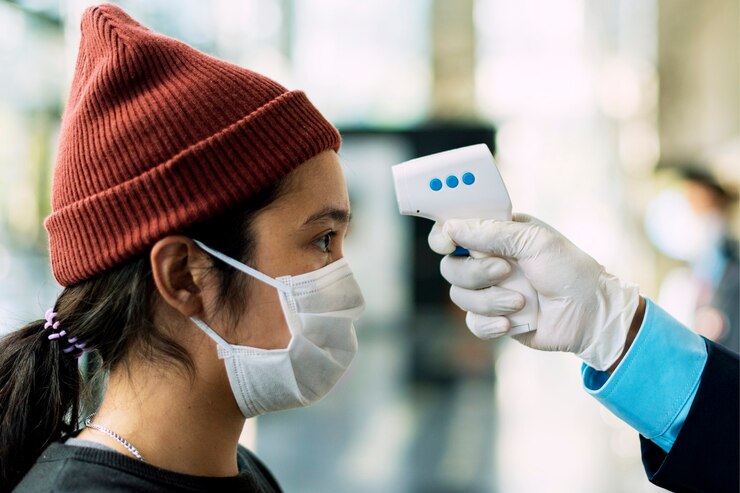
COVID-19 has reshaped how we approach health and safety, making testing a critical component of controlling the virus’s spread. If you’ve been exposed to someone with COVID-19, understanding when to get tested is essential to ensure accurate results and protect those around you. This guide explains the ideal timing for COVID-19 testing, what to do if you’re exposed, and why timely testing remains vital even in a post-vaccine world.
Understand the COVID-19 Incubation Period
The incubation period for COVID-19—the time between exposure to the virus and the onset of symptoms—ranges from 2 to 14 days, with an average of about 5 days. This period is crucial because testing too early after exposure may not detect the virus, even if you are infected.
During the initial days following exposure, the virus might not have multiplied enough to be detected by most tests. This is why testing within the correct time frame is essential for obtaining accurate results.
When Should You Test After Exposure?
Health experts recommend waiting 3 to 5 days after exposure to get tested for COVID-19. This window allows enough time for the virus to reach detectable levels if you have been infected.
However, there are exceptions to this rule:
- Immediate Symptoms: If you develop symptoms like fever, cough, or loss of taste and smell, you should test right away, regardless of how many days have passed since exposure.
- Ongoing Exposure: If you live with someone who has tested positive, consider testing multiple times during the recommended isolation period to ensure you remain uninfected.
Types of COVID-19 Tests and Their Accuracy
There are two primary types of COVID-19 testing:
-
PCR Tests
- Known as the “gold standard,” PCR tests are highly accurate in detecting even low levels of the virus.
- These tests are best taken during the 3–5-day window after exposure or as soon as symptoms develop.
-
Antigen Tests
- These are faster and more convenient, often yielding results in minutes. However, they may be less sensitive, particularly during the early stages of infection.
- Antigen tests are ideal for quick checks, especially in high-risk or crowded settings.
Your choice of test will depend on availability, symptoms, and personal circumstances.
Symptoms That Signal Immediate Testing
If you experience any of the following symptoms, it’s crucial to test right away:
- Fever or chills
- Persistent cough
- Loss of taste or smell
- Fatigue or body aches
- Difficulty breathing
Even if these symptoms are mild, they could indicate a COVID-19 infection, warranting prompt action to prevent spreading the virus.
COVID-19 Testing for Asymptomatic Individuals
It’s possible to carry and spread the virus without showing any symptoms. This is why COVID-19 testing is recommended even for asymptomatic individuals after confirmed exposure. Regular testing, particularly in high-risk environments, is a proactive way to curb transmission.
What to Do While Waiting to Test
If you’ve been exposed to COVID-19 and are waiting for the optimal testing window:
- Self-Isolate: Avoid contact with others, especially those at higher risk of severe illness.
- Monitor Symptoms: Keep track of any signs of illness, such as fever, sore throat, or fatigue.
- Follow Precautions: Wear a mask and maintain social distancing when in shared spaces.
Taking these steps helps protect your community while ensuring that you’re prepared to act if you test positive.
When to Retest After a Negative Result
A negative test result doesn’t always mean you’re in the clear. Retesting is recommended in the following scenarios:
- Continued Symptoms: If you feel unwell despite a negative test, retest after 1–2 days.
- Ongoing Exposure: If you’re in close contact with a positive case, multiple tests may be necessary.
- False Negatives: Testing too early can lead to false negatives; retesting ensures accuracy.
The Importance of COVID-19 Testing
Even as vaccines and treatments for COVID-19 become more widespread, testing remains a critical tool in managing the pandemic. By identifying infections early, COVID-19 testing helps break the chain of transmission, protect vulnerable populations, and guide public health measures.
Conclusion
The timing of your COVID-19 test after exposure can significantly impact its accuracy. Waiting 3–5 days, unless symptoms develop earlier, is generally recommended to ensure reliable results. Whether you’re symptomatic or asymptomatic, testing is an essential step in safeguarding your health and the well-being of those around you.
If you’ve been exposed or suspect you might have COVID-19, consult a healthcare provider to determine the best course of action. Remember, timely COVID-19 testing isn’t just about protecting yourself—it’s about protecting your community too.
Let’s stay safe, informed, and proactive in our fight against COVID-19!





Leave a Reply